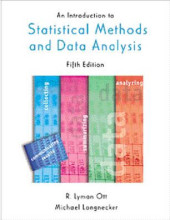Summary: Nutrition And Sports
- This + 400k other summaries
- A unique study and practice tool
- Never study anything twice again
- Get the grades you hope for
- 100% sure, 100% understanding
Read the summary and the most important questions on Nutrition and Sports
-
Introduction; fit for the fight
This is a preview. There are 4 more flashcards available for chapter 20/03/2017
Show more cards here -
Which of the following proteins are slowly digestible and which is fast digestible; Casein and whey?
Casein is slowly digestible and whey is fast digestible -
How much fluid should be consumed to re-hydrate the sweat-loss due to exercise?
150% -
What four factors influence an athlete's performance?
Motivation, innate sporting talent, physical training and nutrition. Nutrition does also influence the physical training. -
A lot of (external) factors can influence the effects when doing research in sports. Name some of these factors.
- Familiarization, the effect can be a learning effect instead of a training effect.
- Verbal encouragement
- Music
- Feedback
- Additional measurements
- Diet
- Exercise
^^ All of the above come should be controlled when doing performance testing- Validity, the performance that is simulated should be well resembled
- Reliability, the measurements used should precisely measure what is meant to be measured
- Sensitivity, the measurements used, should detect small but important differences
-
Energy metabolism I
This is a preview. There are 3 more flashcards available for chapter 21/03/2017
Show more cards here -
What are the ways to get a source of ATP for muscle force generation?
- ATP breakdown
- Phosphocreatine hydrolysis = rapid (and great) energy release without the need for oxygen which occures in the sarcoplasm (1 and 2 together is the phosphagen system)
- Anaerobic glycolysis = Glucose-6-P to lactate. (2 and 3 together is the substrate-level-phosporylation)
- Aerobic glycolysis
- Glycogenolysis
- Beta-oxidation
- Direct uptake of glucose from the blood with GLUT4
- Lipolysis
- Protein oxidation
- ATP breakdown
-
Does a weightlifter use mostly type 1 or type 2 fibers?
Type 2 -
What is the adenylate pool?
The pool of ATP, ADP and AMP. -
Why does cross-country skiers have the highest maximal oxygen consumption/aerobic capacity?
Cross country skiers have to use more muscle groups, they have more active muscle mass during their sport. -
Energy metabolism II
This is a preview. There are 5 more flashcards available for chapter 22/03/2017
Show more cards here -
What are important factors influence the metabolic response to exercise?
- exercise intensity
- physical fitness of the subject
- exercise duration
- substrate availability
- nutritional status
- diet
- feeding during exercise
- mode of exercise
- previous exercise
- drugs
- environmental temperature
- altitude
-
What is PFK? What inhibits PFK and what stimulates PFK? And what is the results of an inhibition of PFK?
PFK is an enzyme that phosphorylates fructose 6-phosphate in glycolysis. High levels of ATP, PCr and citrate inhibit PFK. High levels of ADP, AMP and fructose-6-P stimulate PFK. An inhibition of PFK results in accumulation of Glucose-6-P, which inhibites hexokinase. Hexokinase stimulates the conversion of glucose to glucose-6-P.
- Higher grades + faster learning
- Never study anything twice
- 100% sure, 100% understanding































